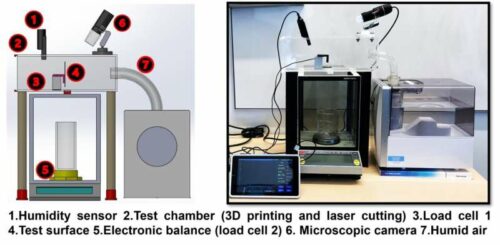Imagine a world where fresh water can be pulled directly from the atmosphere, using surfaces that mimic spider webs and the Namib desert beetle. With innovative techniques and a commitment to sustainability, this team crafted energy-efficient solutions to the global freshwater crisis.

Conventionally, fresh water is obtained from rivers, lakes, underground reserves, and treated seawater. A group of innovators is developing methods to extract water vapour from the atmosphere and convert it to liquid form. “The spider’s web masterfully captures water. The spider doesn’t need to venture to the river for a drink; it harvests moisture directly from the environment. The design of a spider’s web is a remarkable feat of engineering,” stated Tam, a University Research Chair specialising in functional colloids and sustainable nanomaterials.
Researchers at the University of Waterloo have engineered sponges and membranes with extensive surface areas that consistently absorb moisture from the ambient atmosphere. Drawing inspiration from nature, the team aims to gather water from unconventional sources, especially in the global freshwater shortage crisis. For instance, the Namib desert beetles, despite having limited access to water, have adapted to harness moisture from the air. They position themselves against the wind, using their uniquely textured body armour to collect water droplets from the fog. This technique lets them accumulate and channel the moisture directly into their mouths.
The research team is delving into biomimetic surface engineering to enable sustainable water collection. A primary focus of their work is on atmospheric water harvesting. Inspired by the beetle’s distinctive surface, they have crafted a similar surface using a cellulose-stabilized wax emulsion. This design attracts minute water droplets while quickly shedding the larger ones. Committed to sustainability, the group utilises net zero carbon materials, including natural and plant-derived substances, in their solutions. The team is pioneering methods to attract and repel water droplets by leveraging interfacial science and nanotechnology.
They have pioneered the creation of superhydrophobic and waterproof paper. The efforts are directed towards crafting an intelligent, adjustable surface that can extract water from the atmosphere and dehumidify it using minimal energy. The forthcoming challenge is to devise a process that allows for the scalable production of these surfaces. Systems for solar evaporation directly harness solar power, drawing in water and producing fresh vapour via evaporation. Unique mushroom structures have influenced innovative designs for solar evaporation. The suggested freshwater production systems are cost-effective, energy-efficient, and eco-friendly. The team has explored and deliberated on various new and promising water collection and purification technologies.






